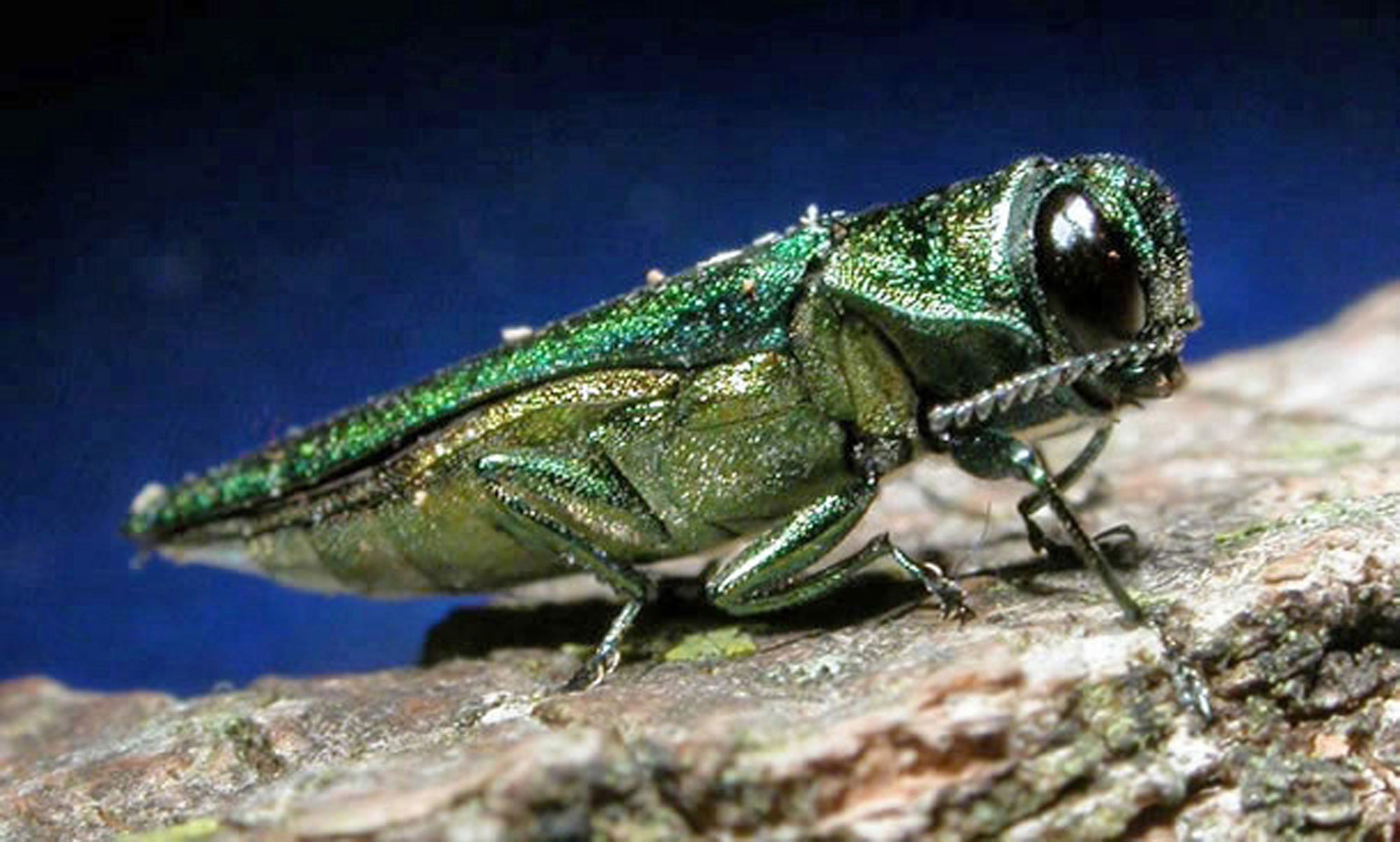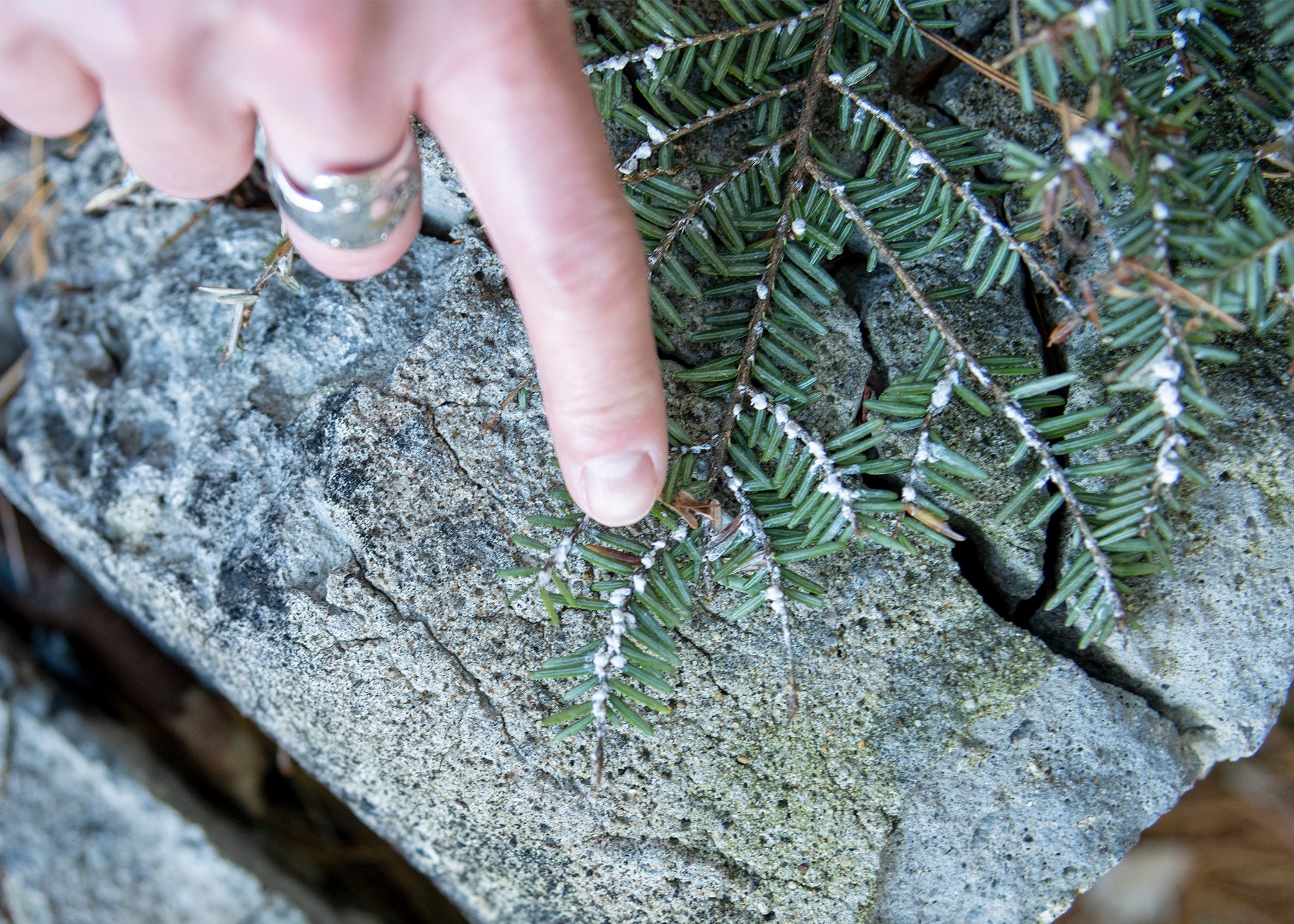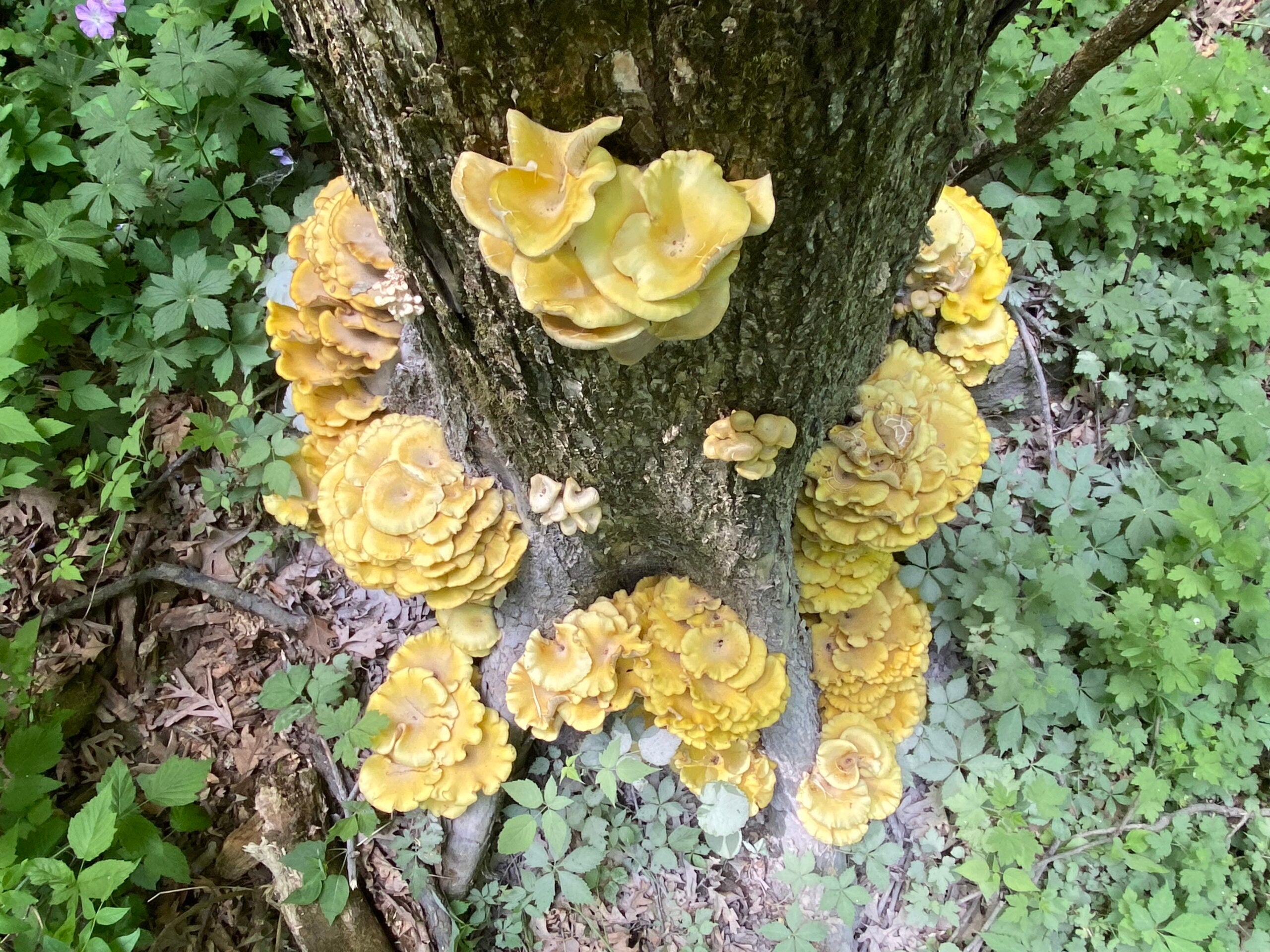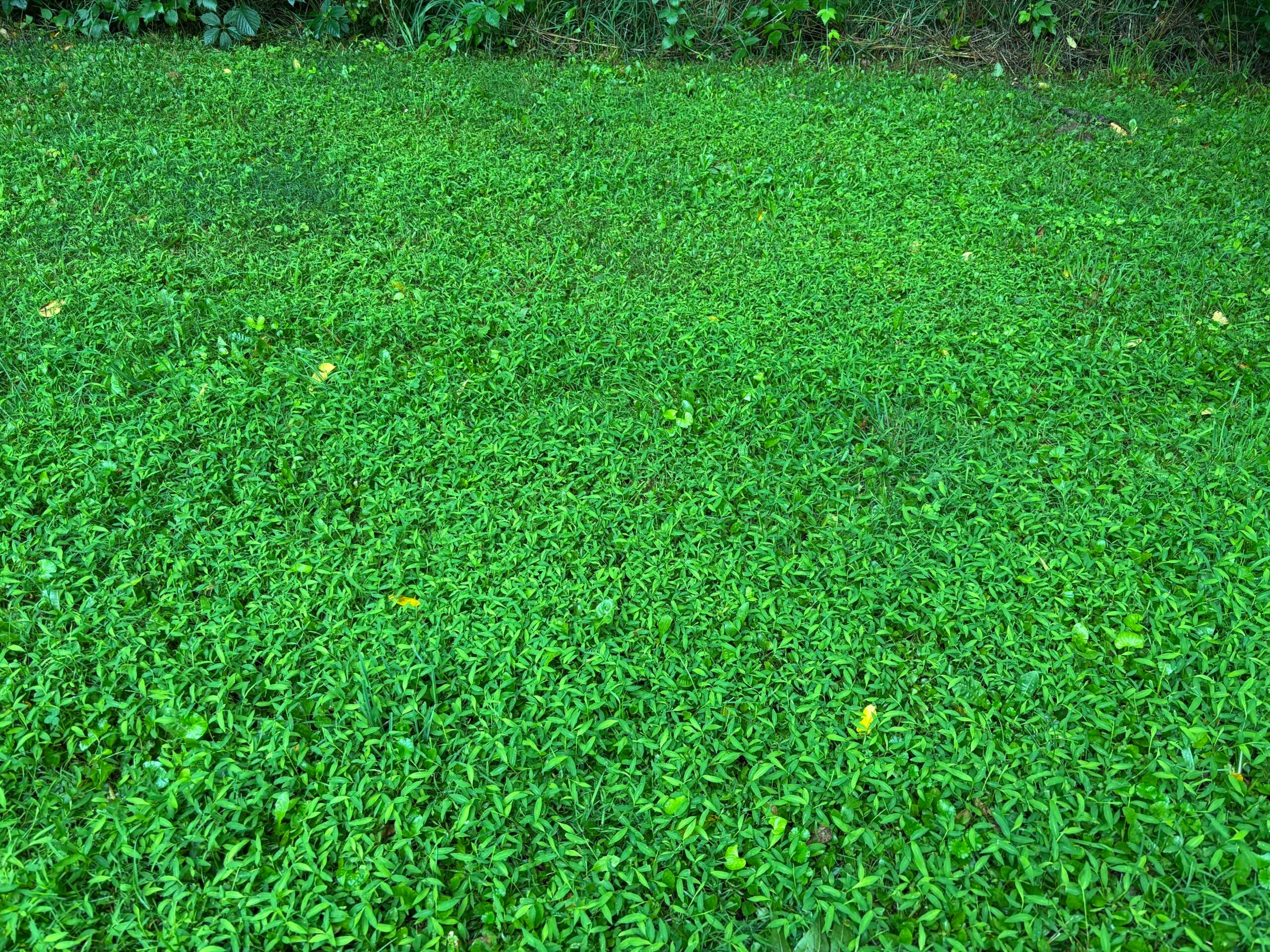State forest health experts say it’s likely an invasive tree-killing beetle has spread to every county in Wisconsin — the insect already killing most ash trees in roughly one-third of the state.
The emerald ash borer originates from east Asia, and it was first found in Wisconsin in 2008. The pest has killed tens of millions of ash trees nationwide. The emerald insect lays eggs in the bark of ash trees, and its larvae burrow tunnels and feed off the trees. An infestation is difficult to detect early on as the beetle is usually present for three to five years before trees start to decline or die.
The Wisconsin Department of Natural Resources recently discovered emerald ash borer, or EAB, in Washburn and Taylor counties. The only place where the invasive beetle hasn’t been detected is Burnett County.
Paul Cigan, an agency forest health specialist, said it’s reasonable to assume the pest will be found there this year or next.
“In the north, we’re still accumulating EAB infestations and impact is continuing to grow and ramp up,” Cigan said. “Overall in the future, ash is unlikely to be as common as it is now.”
As of 2018, there were about 890 million ash trees in Wisconsin’s forests, making up roughly 8 percent of all trees in the state, according to the DNR. That same year, about 20 percent of all trees in urban and residential landscapes were ash — that’s more than 5 million ash trees — representing a value of more than $1.5 billion.
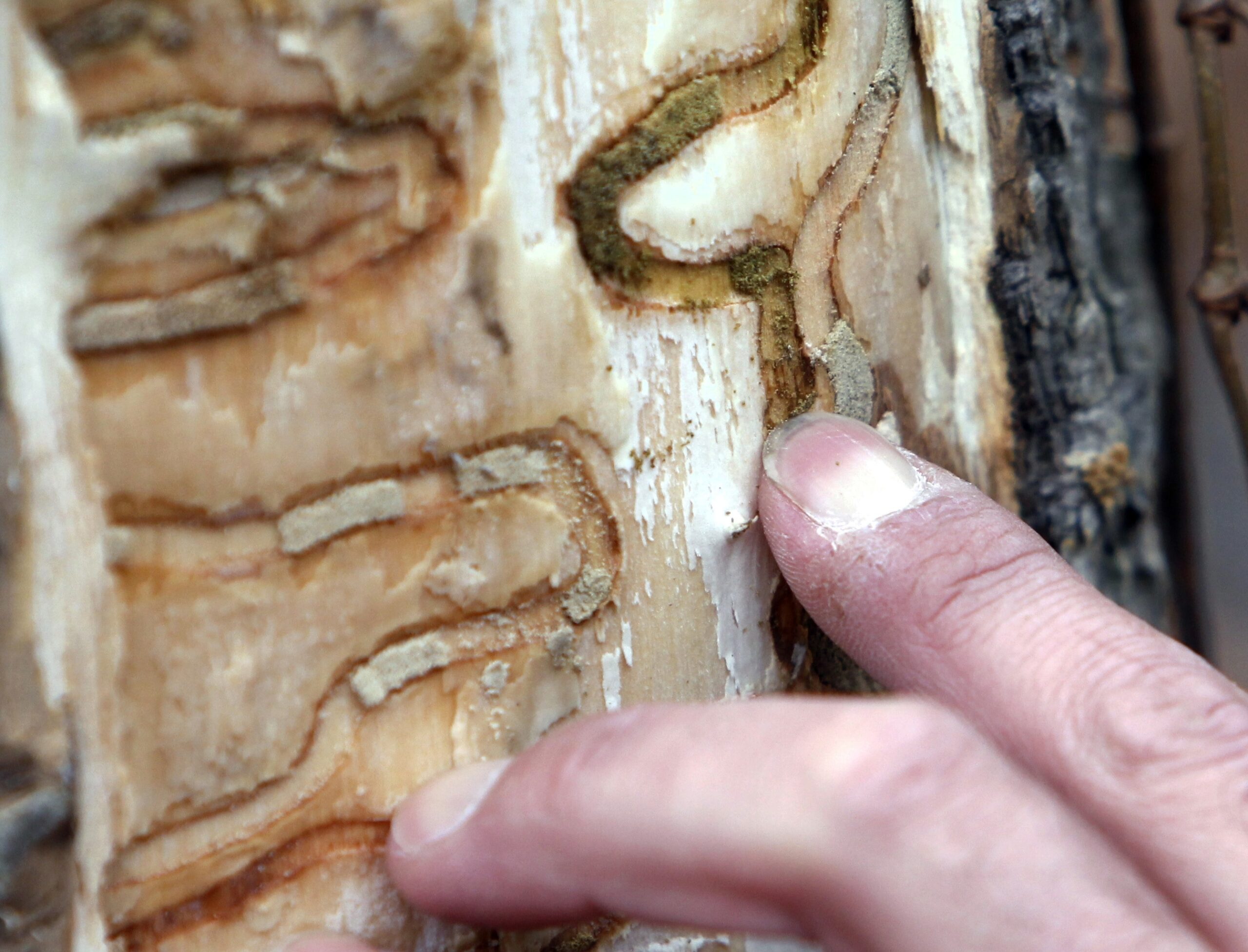
News with a little more humanity
WPR’s “Wisconsin Today” newsletter keeps you connected to the state you love without feeling overwhelmed. No paywall. No agenda. No corporate filter.
As of 2024, Cigan said most ash trees in the southern two-thirds of the state have been declining or killed by emerald ash borer. In 21 counties, mostly in the southeast and along the Mississippi, more than 90 percent of ash have been killed, according to a 2023 state report.
Around 50 percent or fewer ash trees have died in northern Wisconsin where infestations are relatively new, according to PJ Liesch, an entomologist with the Division of Extension at the University of Wisconsin-Madison.
“Unfortunately, we’re still going to be seeing lots of ash trees dying over the years and likely decades to come,” Liesch said.
If areas go untreated, Cigan said it’s likely that 99 percent of all green, white and black ash trees will die. Even so, he said, most property owners in northern Wisconsin still have a chance to protect high-value ash trees with insecticides.
He urged landowners to conduct an assessment with the help of a professional forester. Early detection could increase options for homeowners to manage their trees and reduce the costs of treatment. Some cities like Madison have spent millions of dollars on treatment and chopping down ash trees along city streets, according to the Wisconsin State Journal.
When ash trees die, Cigan said there can be an increase in invasive plants, as well as swamping or higher water tables. The loss of ash trees can also diminish wildlife habitats and reduce timber values.
Liesch noted the Kentucky-based company that makes Louisville Sluggers has been shifting away from the use of ash for their legendary baseball bats. The loss of ash trees also poses social and cultural effects, including for Wisconsin’s Ojibwe tribes.
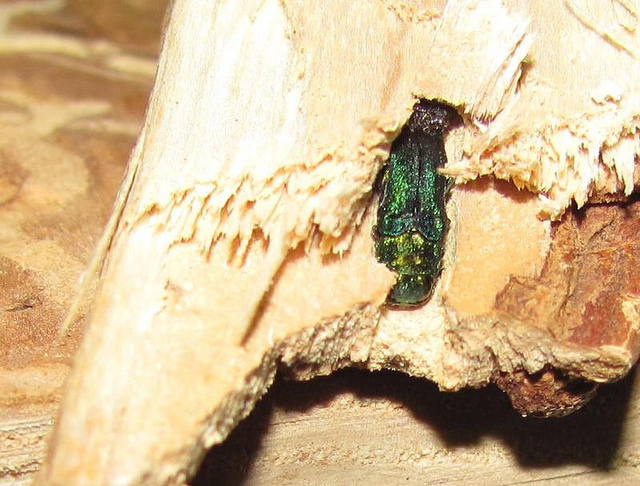
April Stone, a Bad River tribal member, works with black ash to weave baskets. Stone coordinates with county forests, private landowners and the Great Lakes Indian Fish and Wildlife Commission to obtain permits to harvest live trees.
Long ago, Stone said people would take ash, or aagimaak in the Ojibwe language, to bend it into the shape of a snowshoe frame or lacrosse sticks. She said black ash, or baapaagimaak, means something along the lines of knocking wood.
“They understood the qualities and the purpose behind what the wood could do and then they used it — incorporated it into their lifeway as a result of that,” Stone said.
Stone works mostly with black ash because rings of the tree can be separated more easily. Once a tree is debarked, she pounds the log and peels off a summer growth ring in strips that are sorted, coiled and dried.
The spread of emerald ash borer has made her work more quickly to harvest black ash trees before the invasive beetle infests ash swamps in northern Wisconsin. She’s gone from harvesting three or four trees each year to as many as 14 trees last year.
As emerald ash borer spreads, Stone said she’s not as worried about finding material for baskets as she is with environmental effects or the loss of knowledge about how to identify the best ash trees for basket weaving.
“Once the (emerald ash) borer comes through, they have to wait for the trees to come back. They have to wait for the trees to adapt while they are adapting to the change of them not being able to go out and harvest those trees,” Stone said. “It’s that information that may get lost while we’re waiting.”
As the beetle has spread, ash trees have become “functionally extinct” in areas along the Mississippi River and southeastern Wisconsin counties. But survivors, known as lingering ash, remain. Over time, Liesch said, it’s possible those trees could be used to breed a new ash tree that’s resistant to the invasive pest.
Wisconsin Public Radio, © Copyright 2026, Board of Regents of the University of Wisconsin System and Wisconsin Educational Communications Board.
